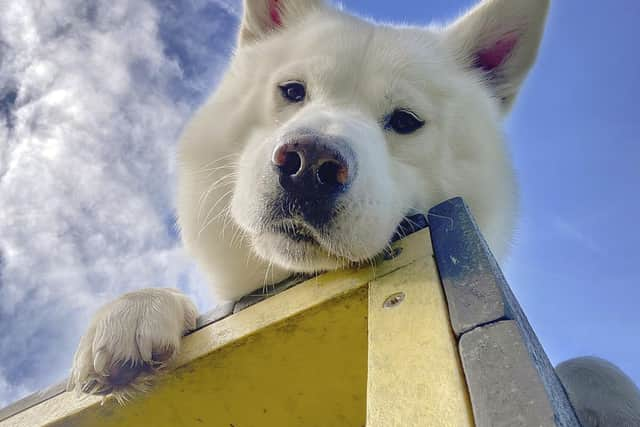Dog Friendly Sussex: Dogs Trust Shoreham issues advice to keep dogs safe during September heatwave
and live on Freeview channel 276
With summer finally arriving in the UK, Dogs Trust Shoreham is warning owners that the temperature inside a car could rise to dangerously high levels in just a few minutes, leading to any dogs inside the car suffering with heatstroke. In some cases, heatstroke can lead to the death of the dog.
Heatstroke can affect any type of dog, but certain breeds and types of dogs are at increased risk, including brachycephalic or flat-faced breeds such as English Bulldogs, Pugs and French Bulldogs, as well as older dogs, overweight dogs and those with pre-existing medical conditions.
Advertisement
Hide AdAdvertisement
Hide AdSymptoms of heatstroke in dogs include panting heavily, drooling excessively, appearing lethargic, drowsy or uncoordinated, vomiting and/or diarrhoea and collapsing.


Dogs Trust has rereleased its Dogs Die in Hot Cars video to highlight the issue of leaving dogs in cars on hot days
If you see a dog in a car in distress, the charity advises that members of the public call 999.
Paula Boyden, veterinary director of Dogs Trust, said: “We have all been taken by surprise by this glorious late summer weather, but while the sunshine might be great for us, hot weather can cause problems for our canine friends.
Advertisement
Hide AdAdvertisement
Hide Ad“Dogs can’t regulate their body heat in the same way as humans, so extra care needs to be taken, especially when exercising or travelling in the car. In this weather, there is no safe amount of time to leave your dog alone in the car, even if you leave the window open.
“The good news is that steps can be taken to prevent our dogs suffering such as only walking dogs in the coolest parts of the day, reducing their exercise, ensuring dogs have access to somewhere cool and shady to lay down and making sure they always have access to fresh water.
“And of course, never leave your dog alone in a hot car, not even for a short amount of time.
“If you do suspect your dog has heatstroke, start cooling them and call your vet immediately as it is vital they receive the care they need as soon as possible.”
Advertisement
Hide AdAdvertisement
Hide AdIt’s not just leaving your dog in a hot car that could result in heatstroke in dogs. Exercising dogs in any weather can cause heatstroke in dogs.
Dogs Trust has additionally issued the following advice to support dog owners during this period of hot weather:
Avoid walking or doing activities either indoors or outdoors with your dog at the hottest times of the day, so early morning or later in the evening is often best.
Always take plenty of water with you when out with your dog and make sure they have access to fresh water at home at all times.
Tarmac can get very hot in the sun – check it with your hand before letting your dog walk on it so they don’t burn their paws. If you cannot avoid taking your dog out in the car on a hot day, even if travelling a short distance, avoid travelling during the hottest times of the day.
Advertisement
Hide AdAdvertisement
Hide AdNever leave your dog in a vehicle on a warm day. Not even with the window open. (Leaving your pet alone in a vehicle or tied up outside can also put them at greater risk of being stolen.)
Use a cooling mat or wrap an ice pack or frozen water bottle in a tea towel for your pet to lie on if they wish.
Use cold treats from the fridge for added moisture or make an ice lolly from pet-friendly ingredients.
Don’t let your pet get sunburnt - use pet-safe sun cream.
Know the early signs of heatstroke which include panting, difficulty breathing, tiredness, less keen to play, drooling and vomiting, and take immediate action.
Advertisement
Hide AdAdvertisement
Hide AdIf your dog has collapsed or is struggling to breathe, call your nearest vet immediately. They can advise if your dog is suffering from heatstroke and what to do. While you contact your vet, here are some things you can do to help cool your dog down: Move the dog to a shaded and cool area; place them in the breeze of a fan, or in an air-conditioned room; offer them drinking water; start cooling them down by soaking their body with tap water, avoiding their face, lie them on a cold wet towel or cooling mat, but don’t place a towel over them as this can raise their temperature.